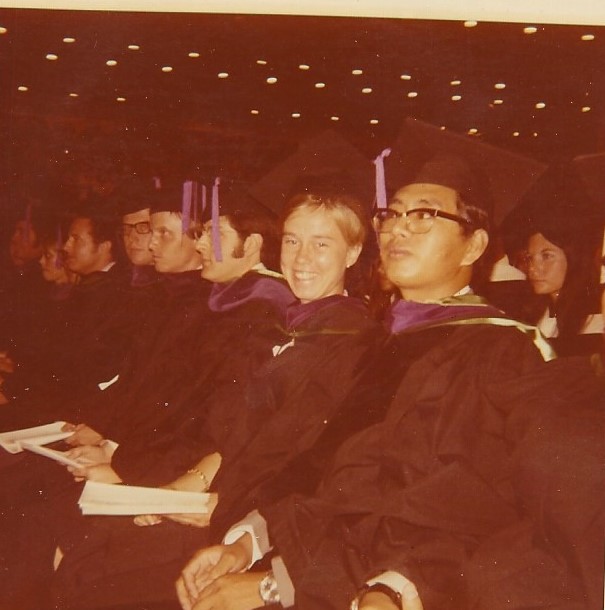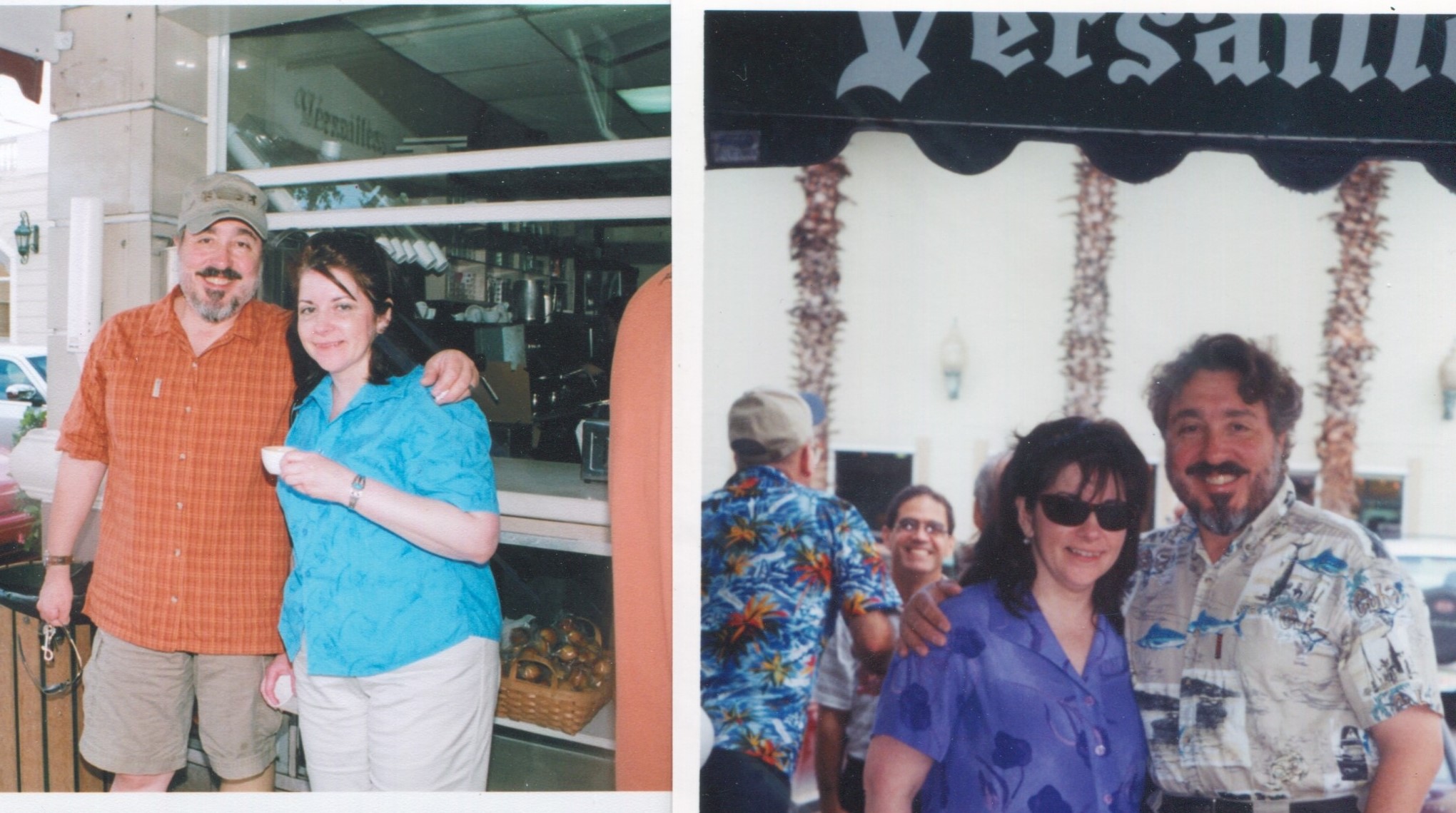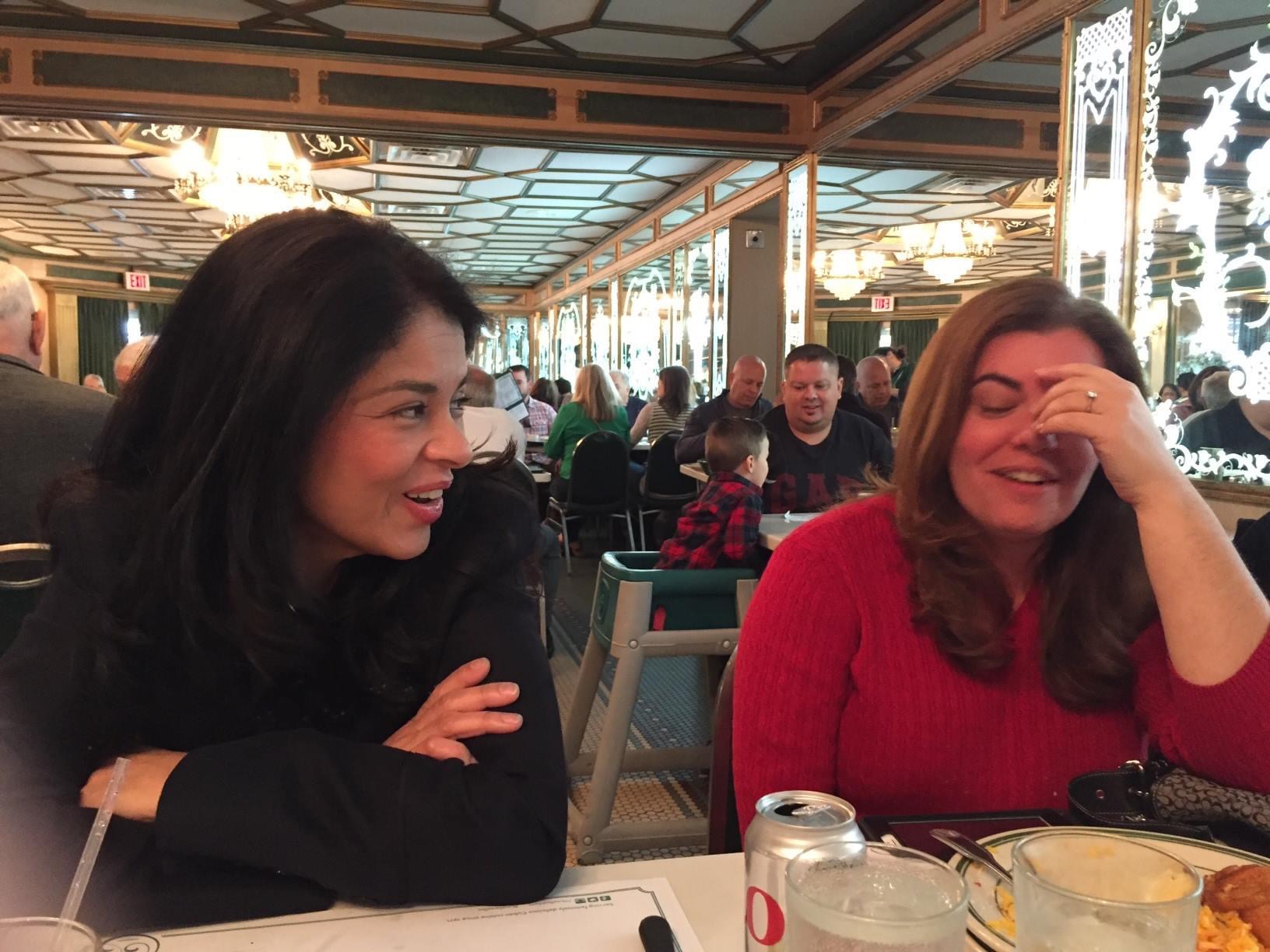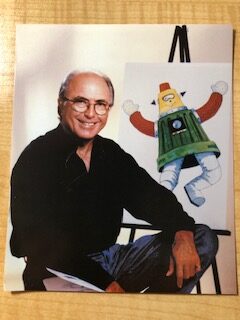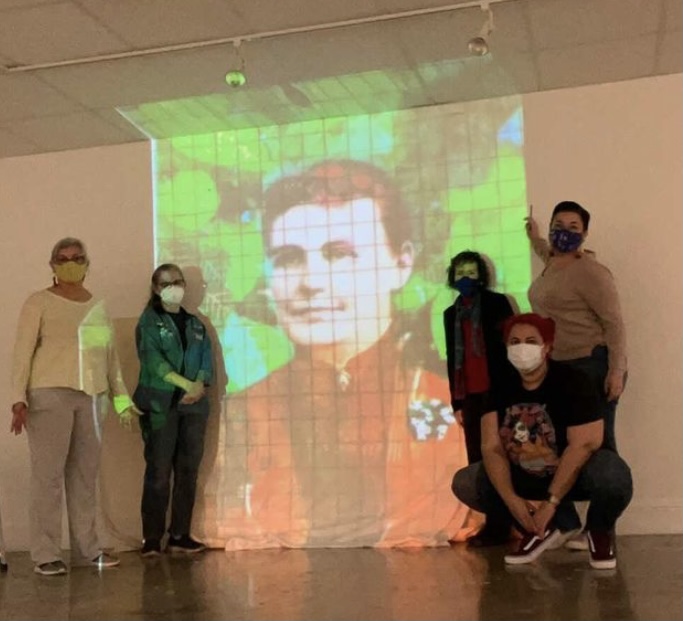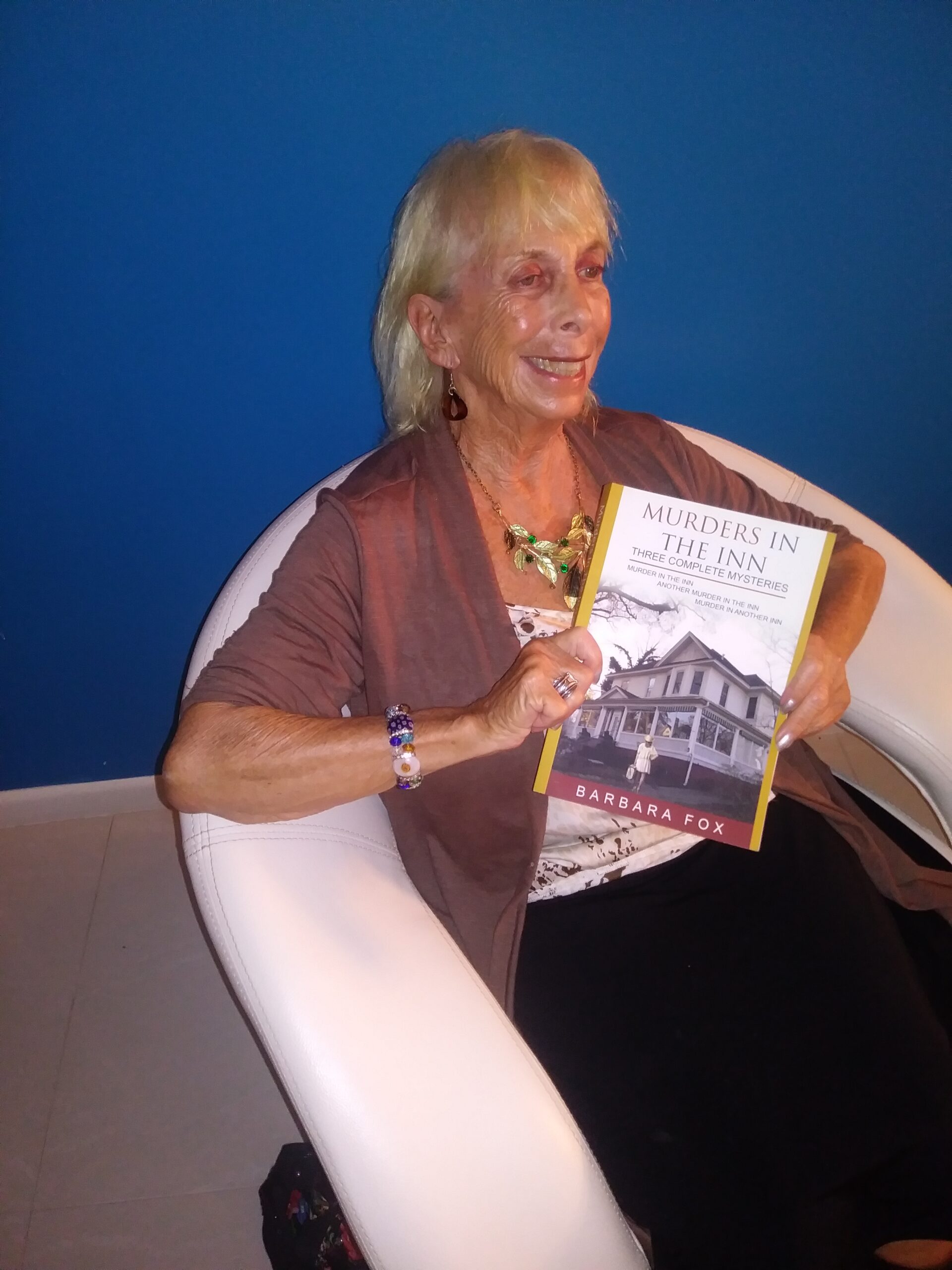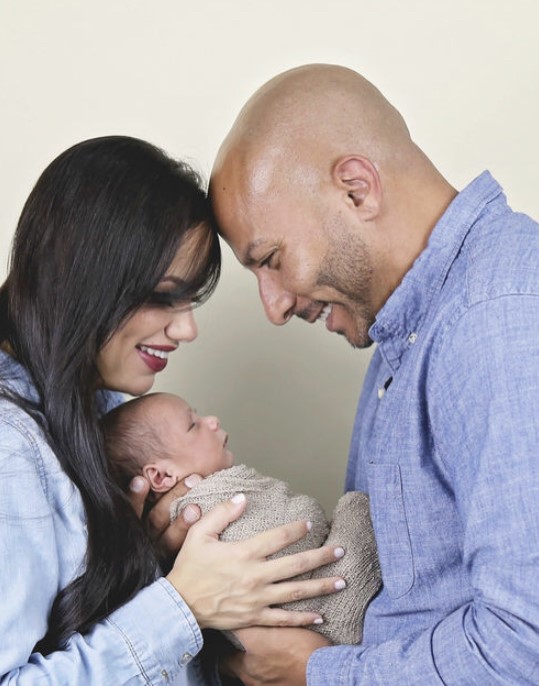All of us have a story, and sometimes I think those of us who settled in Miami may have more than one.
I was born and raised as a Swedish-speaking Finn in in Helsinki, Finland, where I nurtured a dream of becoming a diplomat and to that end I enrolled in the Univ of Helsinki Law School where my dissertation was consular and diplomatic law. Then love intervened, and a week after graduation I married an American law student and moved with him to Birmingham, Alabama. This was December 1968.
After our first year of marriage, we more or less placed a finger on a map and decided Miami was the city that would complement our international background. We put our meager newlywed belongings in a trailer which we hitched to our 1969 Mustang Convertible, and two days later we pulled to a stop on Biscayne Blvd in the center of what was to be my Home of Hope (that unknown, but supposedly more “international” city than Birmingham).
With the top down, we stepped out of the car to soak in the ocean air through the swaying palm trees lining the waterfront behind the Main Library then sitting majestically in what’s now Bayfront Park. A man and woman passing by glanced over at us – probably the sight of the convertible pulling a trailer. As I asked them for a good seafood restaurant somewhere nearby on the water, they said something in Spanish (barely resembling what I was used to hearing in Europe). Suddenly I was energized by a feeling of being “international” as this meant having to navigate between other languages than English. How nostalgic! How exciting!
This was definitely where I belonged!
Within just a few months I became a candidate for a master’s degree in Comparative Law (MCL) at UM Law School, the first female to be admitted to this nascent program for graduates of foreign law schools or, as they were called then, “foreign students.” At that time, any sense of “internationalism” was in the shape of a few of us “foreigners” mixing with American law students who mostly ignored us. In my graduating class (June 1971) there were only four of us (one from Taiwan and two from Thailand, although the program founder’s hand-written list had only three: Chile, Finland, and Vietnam).
When I entered my first class and found myself surrounded by domestic law students in shorts and with their sandal-clad feet up on a chair in front of them, my stodgy old-world educational sensibilities were immediately shaken. These students even talked to their professors as if they were longtime pals! I had studied at the University of Geneva (a city then known for its plethora of international organizations) as well as the Hague Academy of International Law (located at that bustling home for the International Court of Justice) and believed there was a sort of acceptable protocol for how people with any international understanding dressed and talked with each other. Above all, it had seemed in both Switzerland and the Netherlands that everyone was genuinely curious about other countries.
Boy, was I in for a culture shock in Miami.
I had barely started my studies at UM Law, this peculiar institution with its architecturally challenged building, when an anonymous letter appeared in 1970 in the law student paper, The Slip Sheet, where the writer bemoaned how foreign students were taking classroom space from Americans.
This attitude hadn’t changed much by 1983 when, anonymously once again, another student complained in the Res Ipsa Loquitur paper about the design of Room 112, a lecture hall dedicated to the beloved founder of the foreign law student program, Dean Rafael Benitez, a pioneering internationalist. The writer didn’t look at the 54 small (18”x13”) flags representing graduates up to that point (with the U.S. flag in the lead and Finland ninth in line) as evidence of a new international dimension of the school. Instead, the disgruntled student opined that the flags, hung flat along the walnut-paneled walls, were the “antithesis to American idealism,” because “[they] would offend the law school.”
And then there were the panels depicting all legal systems around the world. The same writer found those to be particularly repugnant; never mind that the theme of the International Student Room was inscribed in the words of the ancient Greek philosopher Socrates on the sign above the podium, “I Am a Citizen of the World.” Nor did the student see any contradiction in the assertion that the law school was a “place to promote and protect liberty and freedom.”
How insular it all seems today.
After graduation and two sons later, I was getting restless. I had continued writing for my hometown newspaper about things Americana (such as our Ocean Law Program, and a comparison of law studies in Helsinki and at UM), but I just couldn’t see any immediate purpose for my MCL degree. I had happily given up my goal of a diplomatic career for love and marriage, but – as often happens in my life – fate intervened. Suddenly and without any warning I received an inquiry from the government of my birth, which made me believe there had been a reason, after all, for my pursuit of the US law degree.
Was I interested in becoming the honorary consul of Finland for South Florida?
Granted, this wasn’t like being the accredited diplomat I had hoped to become (unless posted at an embassy, consuls don’t have diplomatic status and honoraries are the lowest on the consular ranking scale), but my excitement over this substitute opportunity must have been so obvious that it led one young son to say, “Mom, are you now more important than President Carter?”
In May of 1979 I jumped into my new consular role with unbounded enthusiasm. Finland was quite an unknown entity in Miami and my government had asked me to establish a presence. Not only did I take on public relations tasks for some major Finnish corporations, but I was thrilled when the Deans of the Consular Corps of Miami (first the Colombian and then the Venezuelan consul general) respectively asked me to serve as Secretary of the Corps. Because that assignment came with the duty of keeping accurate membership records, I often became the group’s “public face” dealing with local leaders wanting the most recent information on some consuls or their offices.
Often, I couldn’t believe the questions I received. Some people were convinced consuls could park their cars anywhere they wanted (including in front of a fire hydrant) or, for that matter, “get away with” breaking laws without consequences. Others couldn’t understand how a local resident suddenly was a “foreign consul.” I simply had to accept the fact that most Americans I interacted with didn’t have a strong foundation in the meaning of being a consul (as opposed to diplomats attached to an embassy whose status was openly on display in their chauffeured, CD-stickered cars in world capitals where they were stationed). This realization then became my opportunity to educate, and I did this with great zeal – much like a person on a religious mission – but always from a practical standpoint avoiding academic jargon and adjusting my explanations to the inquiry. This was also the beginning of my extensive collection of notes drawn from real live situations with consuls, which eventually led to three books (one of which is with a major academic publisher, Palgrave Macmillan, that specifically liked my practical approach to the topic).
And then fate intervened again. In the fall of 1984, Dean Claude Sowle invited me to meet with him about the position of Associate Director for what was then called the Foreign Student Program at the law school. Over lunch (which I almost missed because my car stalled on the way there; – long before Uber days), he surprised me by saying one of my attributes was my role as honorary consul. It would open doors to new international connections for the program, he said, a prescient observation as I later used my consular status to gain access to some Washington embassies where I diplomatically discussed with educational officers the mutual benefit of these foreign governments sponsoring stronger students than we had previously had at UM Law.
I started in my new position in 1985, carrying along the unique perspective of having been a foreign student myself (MCL ’71), and as I mentioned, the first female in the program. Also, and perhaps because it was more prevalent among post-war Europeans, my world view was broader than that of some domestic educational and civic leaders I met in Miami. There were naturally some exceptions, among which Sookie Williams stands out. The long-standing VP of Miami Daily Business Review, the official court newspaper, she took great pleasure in arranging visits to criminal and civil courts where the foreign students could ask questions of a sitting judge. She also hosted annual visits to the newspaper offices, a much-favored event by students whose home countries didn’t have a separate paper for the business and practice of law. Gradually, local lawyers also became increasingly supportive of our foreign graduates, most notably Burton Landy who also held the position of honorary consul of Korea.
Meanwhile, the activities of the Consular Corps had become a topic of great fascination for the general public. Time was definitely right for me to find a place in the press to educate and inform so for almost ten years I penned a monthly column for Miami Today, a weekly paper that covered international trade among all.
From Harvard I had learned about something called “community hosts” and to that end I built relationships through my participation in the Foreign Student Integration Committee of the Greater Miami Chamber of Commerce. When I was asked to serve on a campus-wide UM committee giving scholarships to foreign students I unabashedly proposed a candidate from our graduate program. In my second semester as an MCL candidate, Prof. Benitez had surprised me with a $500.00 scholarship, so I knew the positive effect of a reward, no matter how small.
When I assumed my UM Law position, I had found myself in the peculiar situation of not having any job description. The clunky old typewriters in the office hadn’t contributed much to a few existing accordion files, and there was no outline of the goals and purpose of the program. Today, I can only smile at my bold but premature memo to my superiors that I’d be more effective if I had “modern electronic equipment.” I guess faxes weren’t part of my concern then because I did use them quite often for recruitment and alumni relations around the world.
Mostly, my job training consisted of the oral history of Benitez, as I took meticulous notes during our in-person meetings before he returned to his retirement in Maryland. One piece of advice standing out from that time was that I should continue in his footsteps, like familiarizing myself with the teaching style of as many professors as possible, so I could steer students away from some. He also urged me to design and teach a class of legal terminology for the linguistically challenged, and being a committed writer myself I took it upon myself to supervise term papers as well.
Dean Benitez (for he had also served as Interim Law School Dean), was a retired Rear Admiral of the US Navy and a former Pan American executive (who, incidentally, greatly assisted me in a consular flight matter before the FAA), with an international outlook that made him an early, perhaps undisputed, advocate for America’s “moral obligation” to give equal access to foreign lawyers seeking an education in the US legal system. As some lacked the necessary English skills he’d gotten faculty approval for an extra hour on their exams, with the requirement that they also write “foreign student” on the cover of their blind-graded Blue Books. Adding to this extra work was the need for more proctors, a role that some staff liked because of the extra pay. If the student’s home language didn’t use the Latin alphabet, exams could be so unreadable that the grading professor asked our office to type them. After a couple of years, the exam-taking skills of students had improved, and the procedure was adjusted.
Although I didn’t openly speak about it at the time, it was often an uphill struggle to create a feeling for the students – some of whom were highly-credentialed Fulbright and Rotary scholars – that the faculty was equally sensitive to all cultural backgrounds. A few years into my term, one professor went so far as to not give the foreign lawyers in his class a two-day leave for a visit to Washington, D.C. where I had arranged privately guided tours of the U.S. Sup. Ct, the U.S. Capitol, the White House, and the Florida House (as only one of two such state houses in the Capital it’s a unique concept to Americans and foreigners alike).
On the other hand, one professor asked for more foreign graduates in her class because she appreciated the new dimension they added to her notoriously difficult subject.
After two days of discussions with Benitez in his former office (which I had been assigned to take over), I was on my own. There was no further guidance, and the “secretary” I inherited quickly made it clear that she was too busy to handle additional paperwork beyond what she already did for the students. Clearly, I had to fall back on my own creativity as well as my personal recollections from my old student days. One major comfort in all my insecurities were those faculty members who warmly greeted me as we passed each other on the long balcony by my office. Sometimes I’d stand by the railing looking south towards the rest of the UM campus, or just “gossip” with an old-timer in the shade of lush trees framing the walkway.
It wasn’t long before I reached out to every law school with a similar program like ours, although it was impossible get an absolute count as some hadn’t yet admitted foreign lawyers but said they would “consider” admission to their master’s program. In the end, my active list contained 32 names to whom I then mailed an invitation (remember, this was long before emails) to come to Miami for purposes of exchanging information with other faculty and administrators.
One year after I started my job, over breakfast (January 17, 1986) at the Faculty Club, UM President Tad Foote welcomed representatives from 26 law schools around the country to a one-day workshop. I had asked him, a former law dean of Washington University/St. Louis, to specifically share with this group of geographically diverse law schools – among them, Harvard, NYU, Brooklyn, Tulane, San Diego, Emory, Georgetown, AU, Chicago, Michigan, Duke – his suggestions for how a law school globalizes through the university.
Usually, academic hierarchy doesn’t lend itself to a university president being this responsive to the request of a subordinate administrator like me but, in my case, Mr. Foote graciously accepted my personal invitation to speak. Again, my Consular Corps connection at work as he’d shown an interest in fostering a relationship with all the foreign consuls in Miami.
From those first tentative steps in 1986, it was only logical to harness the enthusiasm for future meetings. The following year, in Los Angeles, I chaired our group, now designated a provisional section by the Association of American Law Schools (AALS). By the time we met for the third year under the auspices of the AALS Annual Meeting in Miami Beach in January 1988, we were granted section status with the name of Section on Foreign Graduate Programs. By then, I was putting together a nationwide program directory, available for free to section members and to others at a small fee (at first, $3.00 and then $5.00).
After chairing each annual meeting of our fast-growing, now-national group since its informal birth in 1986, I was succeeded by the Asst. Dean of Duke, Judy Horowitz (1989), who then appointed me editor of our newsletter. Following her were Roberta Evans, Chicago (1990), Virginia Gordan, Michigan (1991), and Howard Greenberger, NYU (1992). In my absence at the 1992 annual meeting in San Antonio (for lack of travel funds from my school), I was chosen Chair Elect and Secretary, but my temporary move from Miami in 1993 created a vacancy in the position of the chair, then ably filled by Louis Del Duca, Dickinson.
Returning now to 1985 and my new UM position, I had immediately been struck by the formal title of it. With the critical view of a semanticist, I believed that calling the enrollees students (although, technically, they were thus while at the law school) didn’t give due credit to any prior professional achievements of some of them. It was also a matter of cultural sensitivity, as all admittees had to hold at least one law degree from an accredited foreign law school. In some cases, they were also influential government officials or renowned members of their native judiciary or military branch (like one particular Brigadier General, who ingratiated himself to staff and students alike for his gentle disposition).
As early as March 1985 of that first term, I proposed a new name for the program and this was approved. Starting with the following year, stationery and brochures then read, Foreign Graduate Program (emphasis added here).
Another matter of immediate interest was the finding of a precise date for the start of our program. Benitez has often been quoted as saying he admitted the first foreign student in 1967, making that year the official “birth” of the program. But at the edge of his own hand-written one-page list is Brazil (’60), followed by Venezuela (’61); Cuba (’64). Inexplicably, his scribbles have the U.S. (’53) at the very top.
The list then goes on with Thailand and Kuwait (’68); Taiwan (’70); and Chile, Finland, Vietnam (’71), followed by 39 more countries and ending with Suriname in 1982. But these personal hand notes only confused me as they don’t corroborate the information in the commencement records.
Since a cross-reference to the Commencement Programs gives the correct graduation date for me (’71), one might conclude that what he’d written was an overview of the years of graduation, not admission. Still, historical uncertainty remains as I look at the snapshot of me and my Taiwanese classmate, both of us in our robes at the June 6, 1971 convocation held at what was then called the Miami Beach Convention Hall (today, MBC Center). Not only is his name identical to that of another lawyer listed in the 1969 Commencement Program, but under then-prevailing visa rules, a foreign student couldn’t subjectively have delayed his graduation with two years. This leaves me wondering about the overall accuracy of any pre-computer-generated records.
Based on the above reasoning, I can only assume that the 1968 Thai and Kuwaiti graduates were admitted in 1967 and, therefore, they – the “first Benitez admittees” – were the real trailbreakers of the program.
But what happened to the earlier countries on his list: Brazil (’60), Venezuela (’61) and Cuba (’64)?
While I have no conclusive answer – or guess – for that question, the admission of Cuban lawyers triggers thoughts of the Castro revolution which brought many of them to Miami where they soon learned that their civil law degree didn’t qualify them for the Florida Bar. Instead of applying to “Benitez’s MCL program” they had to get a JD degree, a decision that involved serious considerations of their future career goals. Certainly, this isn’t the place to contemplate the many predicaments they faced.
The inclusion of the two other early countries, Brazil and Venezuela, is more difficult to get past. Since Benitez himself used 1967 for the start of the MCL, it’s possible Brazilian and Venezuelan law graduates had been admitted as JD candidates, in which case they could still be classified as “foreign students” in his list of foreign students from 1960 and 1961. But I can’t even venture a guess on why the U.S. (’53) appeared in his papers.
In the beginning, foreign graduate students were only admitted as MCL candidates but gradually, they were able to petition for a transfer to the more prestigious LL.M. degree till it became quite obvious that we were losing several good applicants because of the strange system of initial admission to the MCL without a promise of a transfer to the LL.M. track. In the early days of my position, I was also baffled by the large number of French applicants, all quite attractive to our program, but with few – if any – accepting our offer of admission. Curious, I investigated this seeming anomaly and found that the New York State Bar required foreign applicants to provide a letter of acceptance from an accredited law school in the U.S. In essence, we were being used as a credentials evaluation agency. At the annual AALS section meeting in Jan 1988, long after I learned this was not a problem isolated to UM only, I was prepared with a petition for a change of the rules. Shortly thereafter, the NY Bar eliminated that part of its eligibility requirements.
As if these self-initiated tasks didn’t add enough to my job, I assumed the duty of being the person authorized by INS (Immigration and Naturalization Services, as it was called then) to ensure that its strict visa regulations were fulfilled before a student could enroll. Under penalty of losing the right to issue an I-10 for a student to apply for an F-1 Student Visa we had to have proof of their ability to cover tuition (in the beginning, $4,040/semester) and living expenses (for a total submitted to INS of $17,000, an amount more than tripled since then).
Once admittees arrived on campus, my new secretary (an innovator of an improved administrative model of efficiency and techniques) and I helped them obtain driver’s licenses, open bank accounts (remember, this was long before internet banking), find housing with the requisite rental of furniture, and make other arrangements that today seem both mundane (like getting a telephone line) and archaic (like explaining to married students wanting on-campus housing (then available for law students) that the U required a translated, certified copy of their marriage license).
An added problem was the fact that the law school calendar was different than the rest of the campus, so exams were scheduled when housing closed down for what was still called the Christmas holiday, leaving some foreign students scrambling for temporary quarters. And then there was the task of keeping track of post-graduate addresses for the government since some new graduates often liked to travel around the U.S. before returning home.
With my non-existing job description going through an ongoing organic evolution, I felt very fortunate that I could also include something I loved: writing. First, I was in a comparative law journal, both in English and Spanish, with an overview of the Scandinavian legal system. Then I wrote an article on consular law for the inaugural issue of the UM International and Comparative Law Review. I had also been asked to completely revise the 2d edition of a book published by the American Law Institute (American Bar Association) on parliamentary law and practice for nonprofits, a topic I then taught to the Executive Board of the FL Bar. These projects, which I truly loved, were unusual for someone in the unspoken role of primary administrator of a graduate program still looking for its footing.
At all times, students had to be monitored for academic progress. This meant placing them in classes where they were given a fair chance to succeed without the risk of failing, which would take them out of status with both INS and their financial sponsors (if they had them). Benitez had also specifically told me to “keep students away” from direct contact with the faculty since some professors were on record with their “manifest” opposition to having foreign students in their classes, calling them an “inconvenience” who “can never achieve fluency of Americans” (all literal quotes).
But I also faced some startling situations of a personal nature. For instance, as a female I had to deal with cultural differences in geographic areas that hadn’t yet modeled my gender in leadership roles.
One day, a native of a country where even decades-long neighbors were never addressed without a title demonstratively came calling for me by my first name while immediately deferring to a male by his last name. Drawing on my prior training in cultural sensitivities (primarily through my activities in NAFSA, then an acronym of the National Association of Foreign Student Advisors), I also counseled a mature judge on matters of the heart when a fellow classmate (from another culture) rejected his advances; his argument was that because of the high esteem he enjoyed in his home country any female should be flattered by his proposition. In another instance, I even feared for my physical well-being when confronted by an irate graduate with a military background who insisted his failing grades were none of my business since his appeal to the male faculty would rectify his untenable visa status.
One area for which I cannot take any credit, but where the school’s pioneering spirit shone through, was the nationally innovative Comparative Trial Program for Foreign Lawyers (the study of law in action through litigation), begun in 1987 as the brainchild of Professor Thomas Ewald and Judge Daniel Pearson. Later, some of the participants said this was where they learned the most about the US legal system. In another instance of fortuitous benefits for future students was a new joint-degree program between the law and business schools, which welcomed the first foreign lawyer in 1987.
Returning now to the Commencement Programs, although with already-mentioned hesitancy over their reliability as a historical timeline for the program, I note that a lawyer from “Arabia” is among the June 1970 graduates, leaving me to wonder if the geo-political news of 1932 hadn’t reached UM yet. It’d take several years for the homeland of the many Saudi Arabian graduates to be correctly noted, although the custom of including the name and the location of their schools, along with the native form of their prior law degree, didn’t seem to get started (quite inconsistently so) until the May 1981 program.
A geographical shift in our graduate student body was partly due to my personalized interactions (no form letters) with financial sponsors, such as the Institute of International Education, binational commissions, and Rotary. Dean Sowle’s encouragement to acknowledge my dual role as a foreign consul and UM representative was of great help when I began my recruitment quest with some Washington embassies for better credentialed students. I also decided to nurture a relationship with the foreign alumni, something I did at my own expense on several trips to the Far East and Europe.
During my second visit to Asia (November 1985), an incident occurred that struck me as a lack of synergy between the law school and the rest of UM, something I’d have to “fix” when returning home. As I walked into the office of the Fulbright Commission in Seoul, the Executive Director greeted me with, “How’s Joe?” I could only assume this person, whom I’d never heard of, was somehow connected with UM.
After my return home I tracked down this “Joe” at his campus office. Josef Silny turned out to be a recent recruit from NYC to the new UM position of Director of International Admissions (1980-1991), where he began his regular recruitment trips to Europe and Asia (once/year and twice/year, respectively); – no wonder, he was known in Seoul! In the late 70s, UM had also made some effort to recruit in the Caribbean, but with Mr. Silny the number of countries represented tripled and the foreign student enrollment grew from some 600 to over 2,000.
Since the law school traditionally considered itself a separate entity, our program hadn’t benefitted from the successes of “Joe”, but during our meeting we agreed that he or his assistant (who also traveled) would also promote the foreign graduate law program with material and special information generated by my office.
Because of UM’s geographical location, it was commonly but erroneously assumed the largest contingency of law graduates came from Latin America. At one time the country with the largest number of enrollees was in fact Germany, and that wasn’t counting the East German Fulbrighter who came before the reunification to do research in ocean law. As a non-degree-seeking economist, his year with us (1988-89) coincided with another first, another Fulbrighter from Papua New Guinea. For sure, I couldn’t compete with Mr. Silny – budget- or otherwise – but three years later I welcomed our first student from the ROC (China), whom I had recruited with phone calls and through the mail.
No doubt, the tropical climate played an important role in attracting students, as many shared in conversations and on their evaluation sheets. Additionally, the increased interaction between our program and the growing international community in Miami mustn’t be minimized.
While I was learning to balance the concerns and expectations of foreign graduates and faculty members alike, there were global events effecting the make-up of the student body. The break-up of the Soviet Union and the financial crunch of Latin America are only two examples influencing how our program had to adapt. Consequently, the central topic at the AALS section meeting in 1992 was US law school curricula in the new globalization, democratization, and privatization of the world. Clearly, changes in the Foreign Graduate Law Program (regardless of how we designate the LL.M for foreign-trained lawyers today) were inevitable.
In 1980, the 90th US Congress had called for increased emphasis on international studies at all levels of American education, and this lofty goal (“promotion of global awareness”) was then emulated by Florida when it named foreign consuls Partners in Progress. In 1980, the Secretary of State also designated one day as the Florida Consular Corps Day when these foreign representatives met legislators with special interests such as international education. Here, again, I wore two hats: that of the Law School and Finnish consul. Today, on a local level, there’s still UM having declared itself a global university although I’ve been unable to verify the exact year for that policy statement.
At this point of My Story it should be clear that my obsession with record-keeping (lifelong, at that!) has provided me a trove of detailed notes corroborating my recollections (even of such matters as the initial increase in the mandatory TOEFL score). My purposeful lookback at what hasn’t been a straight trajectory for a program that may have begun in 1967 (depending on what records you rely on) includes recollections of my own experience as a foreign graduate in 1970-1971, a time when being “a foreigner” at the law school wasn’t always a positive label. Mainly, my slice of history covers the beginning of spring 1985 and ends with the school year 1993, with an occasional digression to prior years, whenever relevant.
How quaint it now seems when I, as a writer with passion for history, began looking through my personal files on the intersection of the law school admitting foreign lawyers and their reception by us. Maybe today’s change from earlier attitudes comes from the fact that English is now the global language among the younger generation so that foreign law applicants taking the universal TOEFL (Test of English as a Foreign Language) no longer struggle with achieving the threshold score needed for their applications to be seriously considered. With the concept of globalism spreading through all areas of today’s society, I can now see how Benitez’s belief of a “moral obligation” (to educate lawyers from other parts of the world) has evolved into something deeper than that, a firm sense of a two-way street reaching across interntional borders.
In conclusion, the observant and thoughtful reader undoubtedly understands that the above has been my look-back – My Story – at the early path from the insular to the global.
But history mustn’t end with 1993.
Now, it’s up to other history buffs to place in the archives of History Miami their recollection of how the Law School’s Foreign Graduate Program evolved from “my time.”
**Cami Green Hofstadter has authored many academic and journalistic pieces, including The Yellow Star that Wasn’t: Scandinavia, Miami, and Me on Jewish-Scandinavian history during WWII, and The Foreign Consuls Among Us: Local Bridges to Globalism. Learn more at chofstadter.com.

